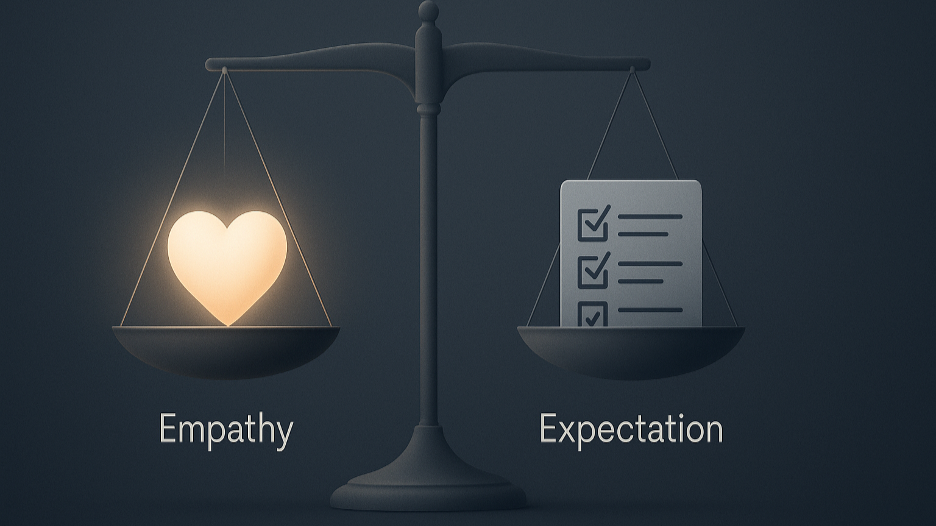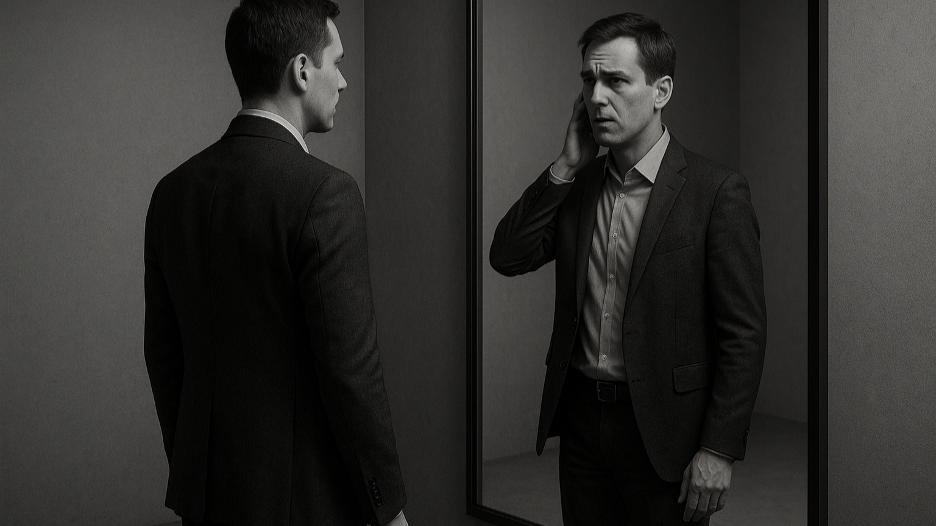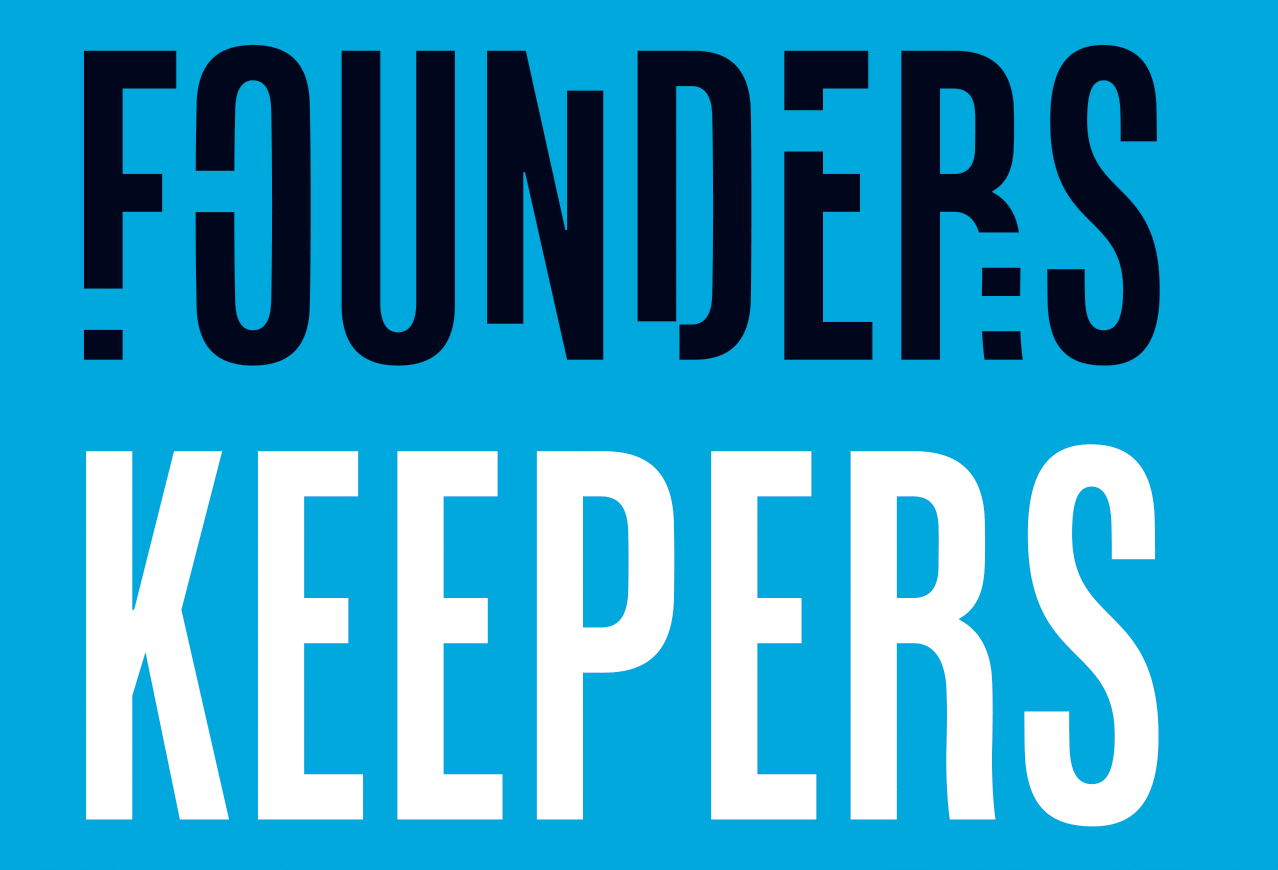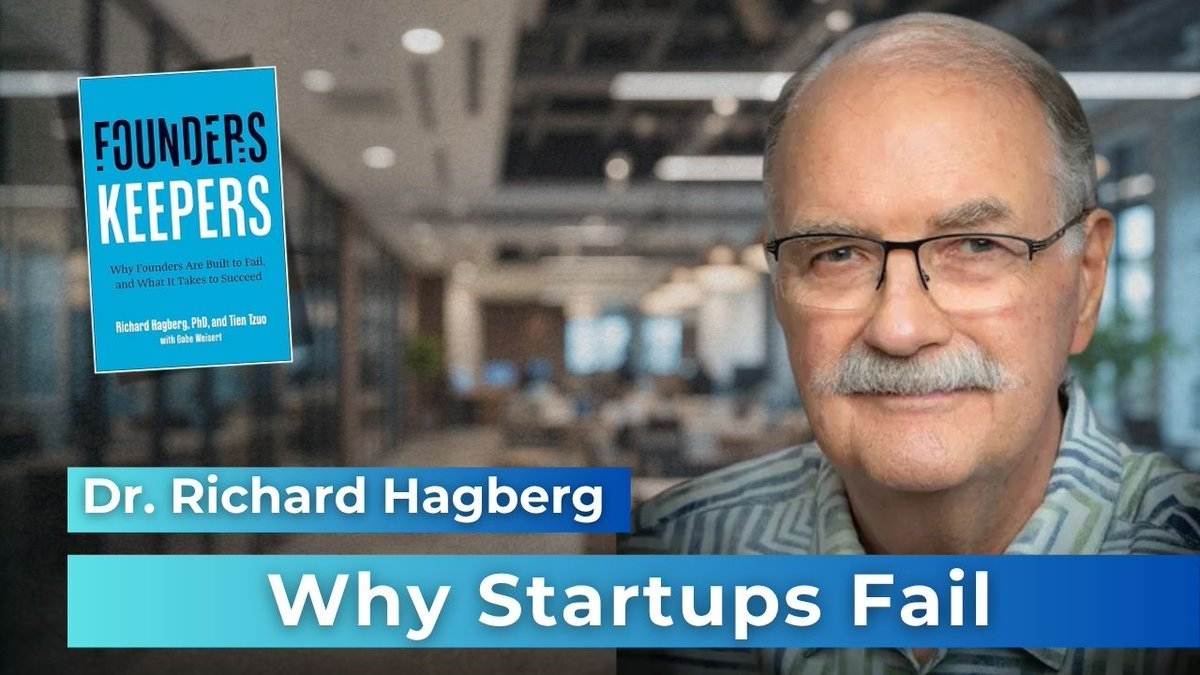Article
The Confidence Myth: Why Humility, Authenticity, Empathy, and Open-Mindedness Are the Secret Weapons of the Best Leaders
January 10, 2025

What if everything you thought you knew about confident leadership was wrong?
Our extensive research into the characteristics of "Best Leaders," based on in-depth analysis of 360-degree evaluations from their followers, revealed a surprising truth. We examined both the personality traits and behaviors of highly rated leaders, and they possessed a unique brand of self-confidence. They weren't necessarily the most forceful, outspoken, or the ones who believed they were the smartest person in the room. Instead, they were consistently described with words like:
But here's where the paradox emerges. A deeper dive into their personality assessments revealed a seemingly contradictory picture. These humble, empathetic leaders also displayed traits like:
This fascinating blend of seemingly contrasting traits challenges the conventional image of the confident leader – the bold, assertive individual who commands attention and never shows weakness. It suggests that true leadership lies in finding a delicate balance: cultivating a quiet inner strength that allows you to embrace vulnerability, empower others, and foster a culture of collaboration and continuous learning, while also possessing the drive and determination to achieve ambitious goals.
This is the confidence paradox: the most effective leaders aren't the ones who shout the loudest or boast the most impressive credentials. They are the ones who possess a deep-rooted belief in their abilities that allows them to embrace vulnerability, seek out diverse perspectives, and empower those around them, all while confidently driving their teams and organizations forward.
In this blog post, we'll delve into the intricacies of this paradoxical confidence, exploring how it differs from arrogance and hubris, why humility is its secret weapon, and how you can cultivate this essential quality to become a truly exceptional leader.
Unmasking the Hubris Trap: When Confidence Turns Toxic
We've all encountered them – the leaders who exude an air of superiority, who surround themselves with yes-men, and who bulldoze their way through decisions without considering the consequences. This isn't confidence; it's hubris, a dangerous mask that often conceals deep-seated insecurities and a fragile ego.
Hubristic leaders may achieve short-term wins, riding on the wave of their charisma and forceful personalities. However, their reign is often marked by a trail of destruction: toxic work environments where fear and intimidation stifle creativity, a lack of trust that erodes loyalty, and ultimately, catastrophic failures born from reckless decision-making.
These leaders, blinded by their inflated sense of self-importance, fail to recognize their limitations. They are resistant to feedback, dismissive of dissenting opinions, and unwilling to acknowledge their mistakes. This creates a culture of stagnation, where innovation is stifled, and the organization as a whole suffers.
The Power of Humility: The Counterintuitive Key to Authentic Confidence
Now, let's shift our focus to the "Best Leaders" we identified in our research. These individuals, while assertive and driven, also possess a profound sense of humility. They understand that true strength lies not in pretending to have all the answers, but in fostering a culture of collaboration and continuous learning.
This is the heart of the confidence paradox: true self-assurance is often found hand-in-hand with humility. Humility, in this context, is not about self-deprecation or a lack of ambition. It's about recognizing that you are not infallible, that you can learn from others, and that your success is often dependent on the contributions of your team.
Humility allows these leaders to:
Confidence as a Journey: Cultivating the Inner Strength to Lead
The good news is that you don't have to be born with unwavering self-belief. Confidence is not a fixed trait; it's a dynamic quality that can be cultivated and strengthened over time. It's a journey of self-discovery, a continuous process of self-reflection, learning, and growth.
This journey involves:
The Impact of Genuine Confidence on Leadership Effectiveness
Genuine self-confidence permeates every aspect of leadership, influencing decision-making, inspiring others, fostering resilience, and enhancing emotional intelligence.
Confident leaders are decisive, even in the face of uncertainty. They trust their intuition, weigh the available information, and make timely choices with clarity and conviction. They understand that indecision can be paralyzing, and that taking calculated risks is often necessary to achieve progress. This decisiveness, however, is not born from recklessness or a disregard for potential consequences. Rather, it stems from a deep understanding of their capabilities and a willingness to take ownership of their decisions.
Moreover, confidence has a profound impact on a leader's ability to inspire and motivate others. Confident leaders exude a sense of optimism and possibility, creating a positive and encouraging environment where individuals feel valued and empowered. They articulate a compelling vision, communicate their expectations clearly, and inspire their teams to strive for excellence. Their passion and conviction are contagious, fostering a sense of shared purpose and motivating individuals to contribute their best efforts.
Furthermore, genuine confidence is closely intertwined with emotional intelligence. Confident leaders are not only self-aware but also possess a deep understanding of the emotions and perspectives of others. They are skilled at building rapport, resolving conflict, and fostering collaboration. They recognize that emotions play a crucial role in the workplace and leverage their emotional intelligence to create a positive and productive environment where individuals feel supported and understood.
Learning from the Greats: Case Studies in Confident Leadership
History and the contemporary world offer a plethora of examples that illustrate the power of genuine self-confidence in leadership. Nelson Mandela, with his unwavering belief in justice and equality, inspired millions to fight for a better future, even after decades of imprisonment. His leadership, characterized by courage, compassion, and an unwavering commitment to his values, serves as a testament to the transformative power of genuine self-confidence.
In contrast, history is also replete with examples of leaders whose arrogance, narcissism, or hubris ultimately led to their downfall. Leaders who surround themselves with yes-men, refuse to acknowledge their mistakes, and prioritize their self-interest over their people's needs often create a toxic environment that breeds resentment, stifles innovation, and ultimately leads to failure.
By studying both positive and negative examples, we can gain a deeper understanding of the nuances of genuine confidence and its critical role in effective leadership. Analyzing the traits, behaviors, and decision-making styles of successful leaders can provide valuable insights for aspiring and current leaders alike. Equally important is the examination of cases where leaders succumbed to arrogance or hubris, allowing us to identify red flags and learn from the mistakes of others.
Ready to Rewrite Your Leadership Playbook?
If you're an executive, founder, investor, or HR professional ready to ditch the outdated "fake it till you make it" mentality and embrace a more authentic, impactful leadership style, I can help. My leadership coaching programs are designed to help you:
Our extensive research into the characteristics of "Best Leaders," based on in-depth analysis of 360-degree evaluations from their followers, revealed a surprising truth. We examined both the personality traits and behaviors of highly rated leaders, and they possessed a unique brand of self-confidence. They weren't necessarily the most forceful, outspoken, or the ones who believed they were the smartest person in the room. Instead, they were consistently described with words like:
- Humble: They readily acknowledged their limitations and sought out diverse perspectives.
- Authentic: They were genuine in their interactions and weren't afraid to show vulnerability.
- Empathetic: They deeply cared about their teams and fostered a sense of belonging.
- Open-minded: They were receptive to new ideas and encouraged constructive criticism.
But here's where the paradox emerges. A deeper dive into their personality assessments revealed a seemingly contradictory picture. These humble, empathetic leaders also displayed traits like:
- Assertiveness: They were decisive, driven, and pushed for results, but without being overly aggressive or domineering.
- Self-Assurance: They possessed a strong sense of self, recognizing their leadership capabilities and ability to influence and motivate, but without arrogance or a need for personal recognition.
- Insistence: They had a sense of urgency and could be insistent yet remained thoughtful and avoided impulsive or reckless actions.
This fascinating blend of seemingly contrasting traits challenges the conventional image of the confident leader – the bold, assertive individual who commands attention and never shows weakness. It suggests that true leadership lies in finding a delicate balance: cultivating a quiet inner strength that allows you to embrace vulnerability, empower others, and foster a culture of collaboration and continuous learning, while also possessing the drive and determination to achieve ambitious goals.
This is the confidence paradox: the most effective leaders aren't the ones who shout the loudest or boast the most impressive credentials. They are the ones who possess a deep-rooted belief in their abilities that allows them to embrace vulnerability, seek out diverse perspectives, and empower those around them, all while confidently driving their teams and organizations forward.
In this blog post, we'll delve into the intricacies of this paradoxical confidence, exploring how it differs from arrogance and hubris, why humility is its secret weapon, and how you can cultivate this essential quality to become a truly exceptional leader.
Unmasking the Hubris Trap: When Confidence Turns Toxic
We've all encountered them – the leaders who exude an air of superiority, who surround themselves with yes-men, and who bulldoze their way through decisions without considering the consequences. This isn't confidence; it's hubris, a dangerous mask that often conceals deep-seated insecurities and a fragile ego.
Hubristic leaders may achieve short-term wins, riding on the wave of their charisma and forceful personalities. However, their reign is often marked by a trail of destruction: toxic work environments where fear and intimidation stifle creativity, a lack of trust that erodes loyalty, and ultimately, catastrophic failures born from reckless decision-making.
These leaders, blinded by their inflated sense of self-importance, fail to recognize their limitations. They are resistant to feedback, dismissive of dissenting opinions, and unwilling to acknowledge their mistakes. This creates a culture of stagnation, where innovation is stifled, and the organization as a whole suffers.
The Power of Humility: The Counterintuitive Key to Authentic Confidence
Now, let's shift our focus to the "Best Leaders" we identified in our research. These individuals, while assertive and driven, also possess a profound sense of humility. They understand that true strength lies not in pretending to have all the answers, but in fostering a culture of collaboration and continuous learning.
This is the heart of the confidence paradox: true self-assurance is often found hand-in-hand with humility. Humility, in this context, is not about self-deprecation or a lack of ambition. It's about recognizing that you are not infallible, that you can learn from others, and that your success is often dependent on the contributions of your team.
Humility allows these leaders to:
- Make more informed decisions: They are not afraid to seek out diverse perspectives, challenge their own assumptions, and admit when they are wrong. This leads to more thoughtful, well-rounded decision-making that considers the needs and perspectives of all stakeholders.
- Inspire trust and loyalty: Their authenticity and willingness to be vulnerable create a safe space for open communication and honest feedback. This fosters a culture of trust and mutual respect, where team members feel comfortable sharing their ideas and concerns.
- Foster innovation: They encourage experimentation and risk-taking, recognizing that failure is an essential part of the learning process. This creates a dynamic environment where creativity flourishes and new ideas are welcomed.
- Navigate challenges with resilience: They view setbacks as opportunities for growth, inspiring their teams to persevere through adversity. Their ability to remain calm and focused in the face of challenges instills confidence in their team and helps them navigate turbulent times with grace and determination.
Confidence as a Journey: Cultivating the Inner Strength to Lead
The good news is that you don't have to be born with unwavering self-belief. Confidence is not a fixed trait; it's a dynamic quality that can be cultivated and strengthened over time. It's a journey of self-discovery, a continuous process of self-reflection, learning, and growth.
This journey involves:
- Embracing challenges: Stepping outside your comfort zone, taking on new responsibilities, and pushing yourself to learn and grow.
- Learning from mistakes: Viewing setbacks as opportunities for learning and development, rather than as personal failures.
- Seeking feedback: Actively soliciting feedback from others, even if it's critical, and using it to identify areas for improvement.
- Practicing self-compassion: Treating yourself with kindness and understanding, recognizing that everyone makes mistakes, and that perfection is an unattainable goal.
The Impact of Genuine Confidence on Leadership Effectiveness
Genuine self-confidence permeates every aspect of leadership, influencing decision-making, inspiring others, fostering resilience, and enhancing emotional intelligence.
Confident leaders are decisive, even in the face of uncertainty. They trust their intuition, weigh the available information, and make timely choices with clarity and conviction. They understand that indecision can be paralyzing, and that taking calculated risks is often necessary to achieve progress. This decisiveness, however, is not born from recklessness or a disregard for potential consequences. Rather, it stems from a deep understanding of their capabilities and a willingness to take ownership of their decisions.
Moreover, confidence has a profound impact on a leader's ability to inspire and motivate others. Confident leaders exude a sense of optimism and possibility, creating a positive and encouraging environment where individuals feel valued and empowered. They articulate a compelling vision, communicate their expectations clearly, and inspire their teams to strive for excellence. Their passion and conviction are contagious, fostering a sense of shared purpose and motivating individuals to contribute their best efforts.
Furthermore, genuine confidence is closely intertwined with emotional intelligence. Confident leaders are not only self-aware but also possess a deep understanding of the emotions and perspectives of others. They are skilled at building rapport, resolving conflict, and fostering collaboration. They recognize that emotions play a crucial role in the workplace and leverage their emotional intelligence to create a positive and productive environment where individuals feel supported and understood.
Learning from the Greats: Case Studies in Confident Leadership
History and the contemporary world offer a plethora of examples that illustrate the power of genuine self-confidence in leadership. Nelson Mandela, with his unwavering belief in justice and equality, inspired millions to fight for a better future, even after decades of imprisonment. His leadership, characterized by courage, compassion, and an unwavering commitment to his values, serves as a testament to the transformative power of genuine self-confidence.
In contrast, history is also replete with examples of leaders whose arrogance, narcissism, or hubris ultimately led to their downfall. Leaders who surround themselves with yes-men, refuse to acknowledge their mistakes, and prioritize their self-interest over their people's needs often create a toxic environment that breeds resentment, stifles innovation, and ultimately leads to failure.
By studying both positive and negative examples, we can gain a deeper understanding of the nuances of genuine confidence and its critical role in effective leadership. Analyzing the traits, behaviors, and decision-making styles of successful leaders can provide valuable insights for aspiring and current leaders alike. Equally important is the examination of cases where leaders succumbed to arrogance or hubris, allowing us to identify red flags and learn from the mistakes of others.
Ready to Rewrite Your Leadership Playbook?
If you're an executive, founder, investor, or HR professional ready to ditch the outdated "fake it till you make it" mentality and embrace a more authentic, impactful leadership style, I can help. My leadership coaching programs are designed to help you:
- Develop genuine self-confidence : Uncover your strengths, acknowledge your limitations, and cultivate the inner strength to lead with authenticity.
- Build high-performing teams: Foster a culture of trust, collaboration, and innovation where every individual feels valued and empowered.
- Navigate challenges with resilience : Develop the mental fortitude to overcome setbacks and emerge stronger than ever.
- Achieve extraordinary results : Unlock your full leadership potential and drive your organization to new heights of success.
-
share this
Related Articles
Related Articles

The Nicest Boss in the World He was adored. He remembered birthdays, checked in on people’s families, and stayed late helping fix slides no one asked him to touch. His team called him “the best boss we’ve ever had.” He was also running on fumes. Behind the warm smile was a leader quietly burning out — drowning in everyone else’s problems, too empathetic for his own good. If you’re a leader who prides yourself on caring deeply, this might sting a little: empathy, taken too far, becomes control in disguise. Empathy’s Secret Shadow Empathy is essential for leadership. It builds loyalty, safety, and trust. But the same trait that makes people feel seen can also make them dependent. When you can’t tolerate someone else’s discomfort, you start protecting them from it. You step in to fix, to soothe, to rescue. It looks noble. It feels generous. But it quietly steals agency — theirs and yours. Your team stops growing because you’re doing their emotional labor. You stop leading because you’re managing feelings instead of outcomes. That’s the hidden cost of care. The Emotional Guilt Loop Over-empathetic leaders live in a constant tug-of-war between compassion and guilt. They think: “They’re already stretched — I can’t pile more on.” “If I push harder, I’ll seem uncaring.” “I’ll just do it myself; it’s easier.” Sound familiar? That’s not empathy anymore. That’s guilt masquerading as kindness. And guilt makes terrible business decisions. Because guilt doesn’t guide you toward what’s right. It just steers you away from what feels uncomfortable. A Founder’s Story One founder I coached, let’s call her Lina, led with heart. She built her company around “people first.” And she meant it. But somewhere along the way, “people first” turned into “me last.” She couldn’t say no. She kept saving underperformers, approving vacations during crunch time, rewriting others’ work to spare them stress. Her team adored her — until they didn’t. Because beneath her helpfulness was quiet resentment. And resentment always leaks. The breakthrough came when she realized something simple but hard: “I was protecting people from learning the hard parts of growth.” That’s when she started leading again instead of parenting. When Caring Becomes Control Here’s the paradox: the more you care, the more you risk over-controlling. You jump in to fix not because you don’t trust them, but because you feel for them. It’s empathy turned inward — I can’t stand watching them struggle. But leadership isn’t about eliminating discomfort. It’s about using it wisely. People grow by stretching, not by being spared. When you save someone from every failure, you’re also saving them from competence. The Biology of Burnout Chronic empathy triggers chronic stress. When you absorb other people’s emotions all day, your nervous system never gets a break. You start mirroring everyone’s anxiety like an emotional amplifier. Your brain thinks you’re in crisis — even when you’re not. That’s why over-caring leaders are often the first to burn out. Their compassion becomes constant cortisol. The irony? The leaders who want to create safety for others end up unsafe themselves. How to Care Without Carrying Feel, then filter. It’s okay to feel someone’s frustration. Just don’t keep it. Ask: “Is this mine to hold?” Help through accountability. Say, “I know this is tough, and I also need you to take ownership.” The and matters. Let discomfort be developmental. When a team member struggles, resist rescuing. Stay present, not protective. Coach before you comfort. Instead of “Don’t worry,” try, “What do you think your next move is?” Reframe empathy as empowerment. Caring isn’t about absorbing pain; it’s about believing people can handle it. Funny but True One exec I worked with told me, “Every time I stop helping, I feel like a jerk.” I said, “No — you feel like a leader. It just takes a while to tell the difference.” He laughed and said, “So… you’re telling me leadership feels bad at first?” I said, “Exactly. Growth always does.” The Cultural Ripple Effect When leaders overfunction, teams underfunction. When leaders hold space instead of taking space, teams rise. Empathy should expand others, not consume you. The healthiest cultures balance care and candor — support and stretch. They normalize struggle as part of the process instead of something to be hidden or rescued. That’s what real compassion looks like in motion. The Maturity of Tough Empathy Empathy without boundaries is exhaustion. Empathy with boundaries is wisdom. The mature version of empathy doesn’t say, “I’ll protect you.” It says, “I believe you can handle this — and I’ll walk beside you while you do.” That’s not cold. That’s developmental. Your Challenge This Week Notice where you’re rescuing someone instead of coaching them. Pause before you step in. Ask yourself, Am I helping because they need it — or because I need to feel helpful? Then take one small risk: let them handle it. They’ll probably surprise you. And you’ll feel lighter than you have in months. Final Word Caring is beautiful. It’s what makes you human. But unchecked empathy turns leaders into emotional pack mules — carrying what was never theirs to bear. Real leadership is still full of heart. It just remembers that compassion without accountability isn’t love. It’s fear. And the moment you stop rescuing everyone, you finally start freeing them — and yourself.s)

The Smart Leader’s Blind Spot It’s strange how often the smartest people make the worst decisions under pressure. They don’t lose IQ. They lose perspective. I’ve seen this happen more times than I can count. A sharp, decisive executive starts second-guessing every move. They overanalyze, overwork, and overcontrol — all in the name of being “thorough.” They think they’re being rational. But underneath the spreadsheets and meetings is something far less logical. It’s fear. The Fear That Doesn’t Look Like Fear We think of fear as panic — sweating, shaking, obvious. But most leadership fear hides behind competence. It shows up as perfectionism, busyness, overcommitment, indecision. It sounds like, “Let’s get more data.” “Let’s not rush this.” “Let’s keep this one close.” That’s not analysis. That’s avoidance with a better vocabulary. When fear runs the show, the goal subtly shifts from making the right decision to avoiding the wrong one. And those two things are worlds apart. The Cost of Fear-Based Leadership When leaders operate from fear, everything tightens. They stop listening. They rush to defend. They play small when the company needs boldness. They keep people who are loyal over people who are competent — because loyalty feels safer. And here’s the real tragedy: the team starts copying the fear. They become cautious, compliant, quiet. Pretty soon, no one’s leading anymore. They’re all managing risk — mostly emotional risk. A CEO’s Moment of Truth One CEO I coached — brilliant, confident, deeply human — was terrified of being wrong in front of his board. He masked it well. On the outside: decisive. Inside: a constant hum of anxiety. After a tough quarter, he admitted, “I realized half my decisions weren’t based on strategy — they were based on protecting my image.” That moment of honesty was the start of his maturity curve. Once he could name the fear, it stopped running his show. He didn’t become fearless. He became aware. And awareness is what turns reaction into wisdom. Why Fear Feels Safer Than Clarity Fear has a strange way of convincing us it’s caution. Caution whispers, “Slow down and look.” Fear screams, “Don’t move.” The first sharpens judgment. The second paralyzes it. And the more we listen to fear, the more it disguises itself as prudence. That’s why emotional maturity isn’t about suppressing fear. It’s about being able to say, “Ah, that’s fear talking — not fact.” How Fear Distorts the Mind Here’s what happens when fear hijacks leadership: Tunnel vision: You fixate on the immediate threat and forget the big picture. Confirmation bias: You start looking for data that validates your anxiety. Short-termism: You make safe decisions that feel good now and cause pain later. Blame shifting: You protect your ego by pushing ownership outward. The mind gets smaller. The leader gets reactive. The company gets stuck. The Maturity Shift Emotional maturity isn’t about being unshakable. It’s about staying curious in the presence of fear. Mature leaders don’t pretend they’re fearless. They just don’t let fear make the decisions. They pause, breathe, and ask, “What part of this is data, and what part is my insecurity talking?” That single question can change everything. A Founder’s Story A founder I worked with once said, “I’m not afraid — I just have high standards.” But as we unpacked it, he realized those “high standards” were actually a way to control outcomes. He feared disappointment — his own and others’. When he finally stopped trying to protect his reputation and started protecting his clarity, his decisions got faster and cleaner. The business didn’t just grow — it started breathing again. Because when you stop trying to look right, you finally have room to be right. Funny, But True I once asked a CEO what he’d do differently if he weren’t afraid of failing. He said, “Probably the same things I’m doing now — just with less Advil.” That’s the thing: most leaders already know what to do. Fear just makes it hurt more. How to Lead Without Fear (Even When It’s There) Name it early. The sooner you recognize fear, the less power it has. Ask yourself, “What’s the story fear’s telling me right now?” Reframe mistakes as tuition. You’ll still pay for errors — might as well learn something from them. Separate identity from outcome. A bad decision doesn’t mean a bad leader. It means a leader who’s still learning — like everyone else. Keep one truth-teller nearby. Someone who loves you enough to tell you when you’re acting from ego. Practice micro-bravery. Tell one hard truth a day. Say “I don’t know” once a week. Let discomfort become strength training. The Paradox of Fear Fear doesn’t make you weak. It means you care. But if you never face it, it becomes your compass — and it always points backward. Courage, maturity, clarity — they’re not opposites of fear. They’re what happen when you stop running from it. Your Challenge This Week Next time you feel that knot in your stomach — before a board meeting, a tough conversation, a high-stakes call — pause. Ask yourself: What am I afraid might happen? Then ask: What might happen if I act from clarity instead of fear? That’s not therapy. That’s leadership hygiene. Final Word The mark of maturity isn’t fearlessness. It’s self-awareness. You can’t control your fear. But you can choose whether it sits in the driver’s seat or the passenger’s. Great leaders don’t wait for fear to disappear. They lead with it beside them — quietly, respectfully — but never in charge.

The Charisma Illusion Charisma gets all the press. It fills conference rooms, wins funding rounds, and dominates the LinkedIn highlight reel. We treat it like the gold standard of leadership — as if volume equals vision. But charisma is a sugar high. It spikes energy, then crashes trust. Composure, on the other hand — quiet, grounded, centered composure — is the kind of influence that lasts. It doesn’t light up a room; it settles one. When things go sideways, it’s not the charismatic leader people look for. It’s the calm one. The Crisis Test Picture this. The product just failed. The client’s furious. Your team’s pacing like trapped cats. Two leaders walk in. One storms into action — loud, fast, “What the hell happened here?” The other walks in slowly, looks around, and says, “Okay, let’s breathe. What do we know so far?” The first one gets attention. The second one gets results. That’s emotional geometry — the calmest person in the room reshapes everyone else’s state. Why Calm Is the Real Power When you stay composed, you’re not just managing your emotions — you’re regulating the entire system. Here’s the neuroscience behind it: people mirror the nervous system of whoever has the most authority. If you’re grounded, they sync to your rhythm. If you’re frantic, they sync to that instead. You don’t need to lecture anyone on resilience. You just have to model it. It’s not charisma that makes people trust you; it’s the quiet sense that you’re not going to lose your mind when things get hard. Charisma’s Half-Life Charisma is a spark. It can ignite a team — but if there’s no composure beneath it, the whole thing burns out. You’ve seen this movie before: the leader who rallies everyone with a passionate all-hands speech, then disappears into reaction mode when things get messy. Charisma without composure is like caffeine without sleep. You’re awake, but you’re not steady. Composure doesn’t get the applause. It gets the loyalty. A Founder’s Story One founder I worked with — I’ll call him David — was known for being a “high-voltage” guy. He could pitch an investor, fire up a crowd, or talk anyone into anything. But his team? They were walking on eggshells. His energy filled every room, but it left no oxygen for anyone else. During one session, I asked, “When you raise your voice, what happens to theirs?” He went quiet. That was the moment he understood that his passion — the thing he was most proud of — had become the team’s anxiety. A year later, his team described him differently: “He’s still intense, but steady. We trust him more now.” He didn’t lose charisma; he layered it with composure. The Calm Before the Influence Here’s what composure actually looks like: You listen longer. Because real influence starts with attention, not argument. You breathe before reacting. That pause isn’t weakness; it’s power management. You let silence do the work. Charisma fills every space; composure creates space for others to step in. You own your tone. You realize your sighs, your speed, your face — they’re all communication tools whether you intend them or not. You choose steadiness over certainty. People don’t need you to know everything. They just need to know you’re okay not knowing. Funny But True A client once told me, “When I’m calm in a meeting, people assume I’m hiding something.” I said, “Good. Let them wonder.” That’s how unfamiliar calm has become. In some cultures, composure looks radical — even suspicious. But it’s exactly what people crave in a world that never shuts up. Why Charisma Is Easier (and More Addictive) Charisma gets feedback. You see the energy rise, you feel the applause. It’s visible. Composure feels invisible — until you lose it. No one thanks you for staying calm during a crisis. But they remember it when deciding whether to follow you into the next one. That’s why maturity in leadership means getting comfortable with the quiet wins — the meeting that didn’t spiral, the argument that didn’t happen, the team that stayed focused because you did. The Emotional Geometry in Practice Think of composure as geometry because emotions move through space. When you enter a room, you alter its emotional shape. If you radiate calm, people’s shoulders drop. Their thinking widens. They start contributing. If you radiate stress, the room contracts. People shrink. Ideas vanish. Influence isn’t what you say. It’s the energy field you create. Your Challenge This Week Before your next high-stakes meeting, pause outside the door. Take one deep breath and ask yourself: What energy does this room need from me right now? Then bring only that. Nothing more. You’ll be amazed how fast everything slows down when you do. Final Word Charisma captures attention. Composure builds trust. One is about how loudly you shine; the other is about how steadily you glow. The leader who can stay centered when everyone else is spinning doesn’t just have influence — they are the influence. And that’s the kind of power that never burns out.
STAY UP TO DATE
GET PATH'S LATEST
Receive bi-weekly updates from the church, and get a heads up on upcoming events.
Contact Us








